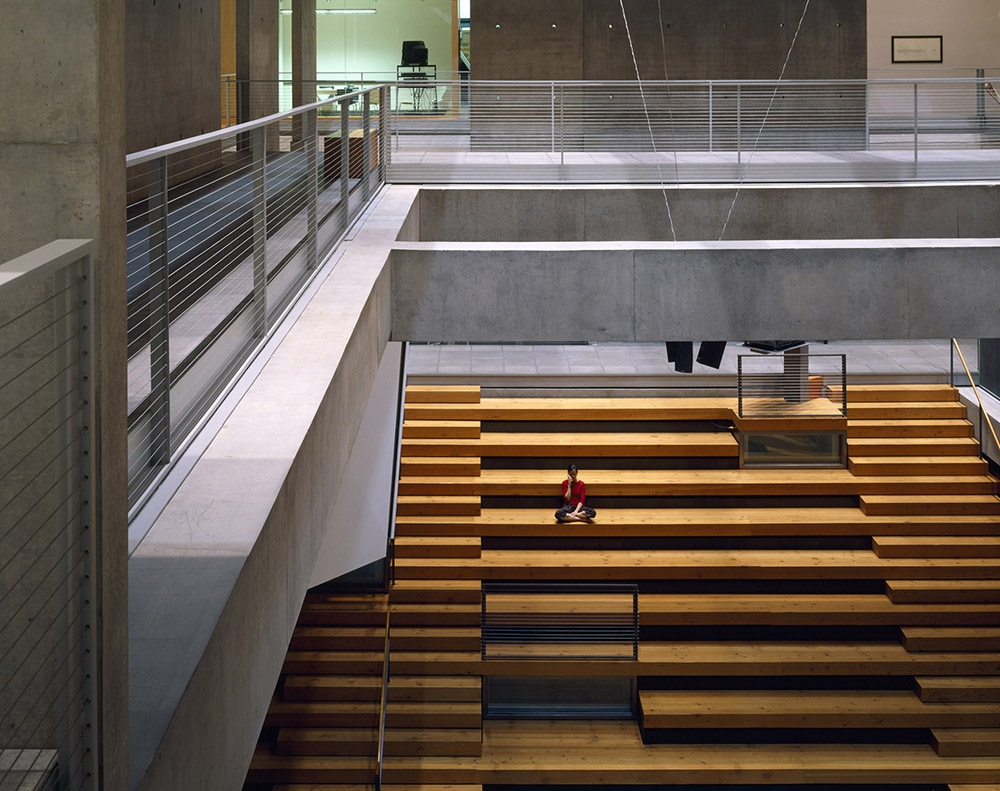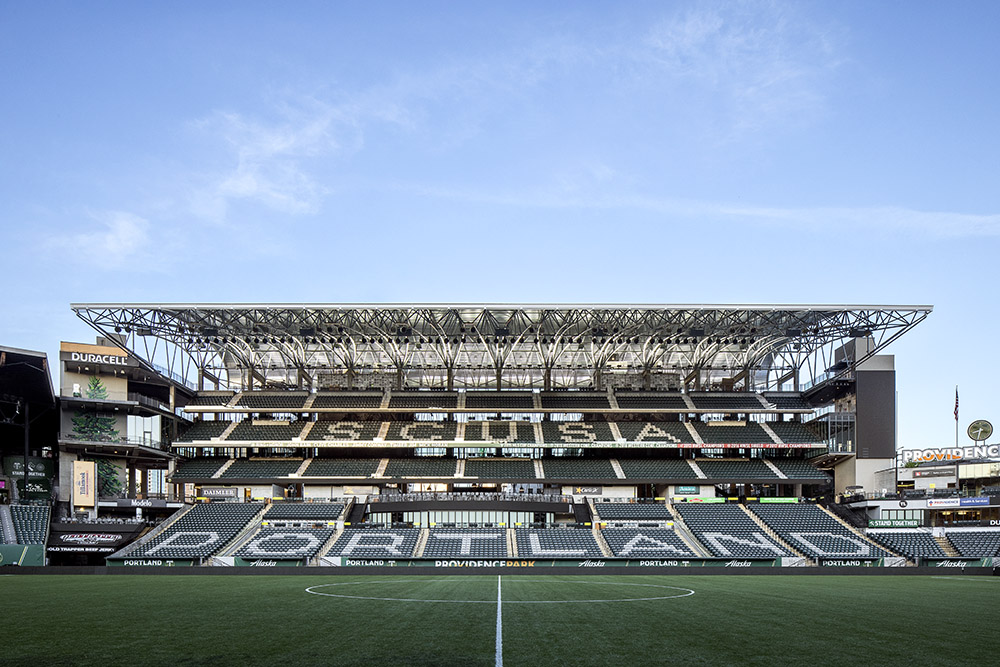Apart (Reflections on the Civic) — a new essay by Brad Cloepfil
Apr 30, 2020
The past few weeks have been filled with loss. The loss of people we know and love, the jobs that sustain us, the whole economy. These initial shocks were followed by the loss of our plans of the future, a sense of the possible. For most of us, thinking of what comes next is what drives us. We inhabit and project our way stations of life, guiding our pilgrimage through the days and seasons. But the journey has been postponed — stolen — by a virus that envelops us like a fog. We live in suspension, held apart by unseen forces.
Amidst this collective isolation a hollowness has grown — a visceral emptiness. From that void a call is rising, a call to a collective, the “we” and “us” that exists in the embodiment of shared place and shared accomplishment. There is a need for the solace that we find in the places forged by history and community — our institutions — schools, museums, religious spaces, concert halls and stadiums. These are places that hold our dreams, ideas and ideals, places that bring us literally together, where we see each other through the shared arenas of art, sport, ritual and celebration.
Last week I was in conversations with the director of a university art museum. She, like many leaders of public institutions, was immersed in a process of reflection and speculation. Imagining a future with an empty or near-empty museum, a place of immense value and limited access — questions the very nature of the institution and university. What it will mean to gather? When will we feel comfortable in close company again, and how will this new distrust manifest itself in the spaces where we come together?
In ensuring our collective safety millions across the globe have “self-isolated”. Many of us have learned to embrace a digital public, finding inventive, adaptive, extraordinary new ways to work and connect. We are truly fortunate to use these tools, in these times, having now learned what it means to “live online” or work from home. Yet in this time of social and technological unity, I ache for a sense of place. I long to encounter the incidental, to walk among things, to find reference and solace among strangers. To see myself reflected back, like a form of social sonar, located and given contour through interaction with others.
Long before this virus, we have been witnessing an incremental erosion of our civic lives, of our sense of common perception and purpose. With our days becoming more and more fragmented and placeless. Our civic realm, in whatever form, celebrates citizenship. It brings people together around a shared identity and greater purpose. These spaces, whether cacophonous and transitory, or calm and introspective, exist as an open invitation, beckoning participation and engagement. These rooms transform into lenses when occupied, sharpening our focus, helping us to see beyond our selves.
Place frames possibilities. Whether through a single act of design or the accumulation of centuries of revision, at their highest aspiration, civic rooms catalyze, inspire and provoke. They call to be filled and transformed. They are imbued with the social, political and creative potential to raise questions and ignite activity. A civic room has a unique charge. In its openness it invites response and interaction, with the activities and use of a space reciprocating that charge, the opposing magnets of a cultural engine.
I want to walk in rooms again — galleries, concert halls, stadiums and piazzas. As inventive as we can be with virtual space, and as enticing the comforts of home and refuge may be, we need great rooms that inspire us. Whether monumental spaces for grand events, intimate spaces of conversation and shared introspection, I want to sense the calm, the energy and the awe that only happens when we come together. If anything, this sense of being alone together has clarified how absolutely essential it is for us to share space, to walk into the same room and see our humanity illuminated before us.





The past few weeks have been filled with loss. The loss of people we know and love, the jobs that sustain us, the whole economy. These initial shocks were followed by the loss of our plans of the future, a sense of the possible. For most of us, thinking of what comes next is what drives us. We inhabit and project our way stations of life, guiding our pilgrimage through the days and seasons. But the journey has been postponed — stolen — by a virus that envelops us like a fog. We live in suspension, held apart by unseen forces.
Amidst this collective isolation a hollowness has grown — a visceral emptiness. From that void a call is rising, a call to a collective, the “we” and “us” that exists in the embodiment of shared place and shared accomplishment. There is a need for the solace that we find in the places forged by history and community — our institutions — schools, museums, religious spaces, concert halls and stadiums. These are places that hold our dreams, ideas and ideals, places that bring us literally together, where we see each other through the shared arenas of art, sport, ritual and celebration.
Last week I was in conversations with the director of a university art museum. She, like many leaders of public institutions, was immersed in a process of reflection and speculation. Imagining a future with an empty or near-empty museum, a place of immense value and limited access — questions the very nature of the institution and university. What it will mean to gather? When will we feel comfortable in close company again, and how will this new distrust manifest itself in the spaces where we come together?
In ensuring our collective safety millions across the globe have “self-isolated”. Many of us have learned to embrace a digital public, finding inventive, adaptive, extraordinary new ways to work and connect. We are truly fortunate to use these tools, in these times, having now learned what it means to “live online” or work from home. Yet in this time of social and technological unity, I ache for a sense of place. I long to encounter the incidental, to walk among things, to find reference and solace among strangers. To see myself reflected back, like a form of social sonar, located and given contour through interaction with others.
Long before this virus, we have been witnessing an incremental erosion of our civic lives, of our sense of common perception and purpose. With our days becoming more and more fragmented and placeless. Our civic realm, in whatever form, celebrates citizenship. It brings people together around a shared identity and greater purpose. These spaces, whether cacophonous and transitory, or calm and introspective, exist as an open invitation, beckoning participation and engagement. These rooms transform into lenses when occupied, sharpening our focus, helping us to see beyond our selves.
Place frames possibilities. Whether through a single act of design or the accumulation of centuries of revision, at their highest aspiration, civic rooms catalyze, inspire and provoke. They call to be filled and transformed. They are imbued with the social, political and creative potential to raise questions and ignite activity. A civic room has a unique charge. In its openness it invites response and interaction, with the activities and use of a space reciprocating that charge, the opposing magnets of a cultural engine.
I want to walk in rooms again — galleries, concert halls, stadiums and piazzas. As inventive as we can be with virtual space, and as enticing the comforts of home and refuge may be, we need great rooms that inspire us. Whether monumental spaces for grand events, intimate spaces of conversation and shared introspection, I want to sense the calm, the energy and the awe that only happens when we come together. If anything, this sense of being alone together has clarified how absolutely essential it is for us to share space, to walk into the same room and see our humanity illuminated before us.